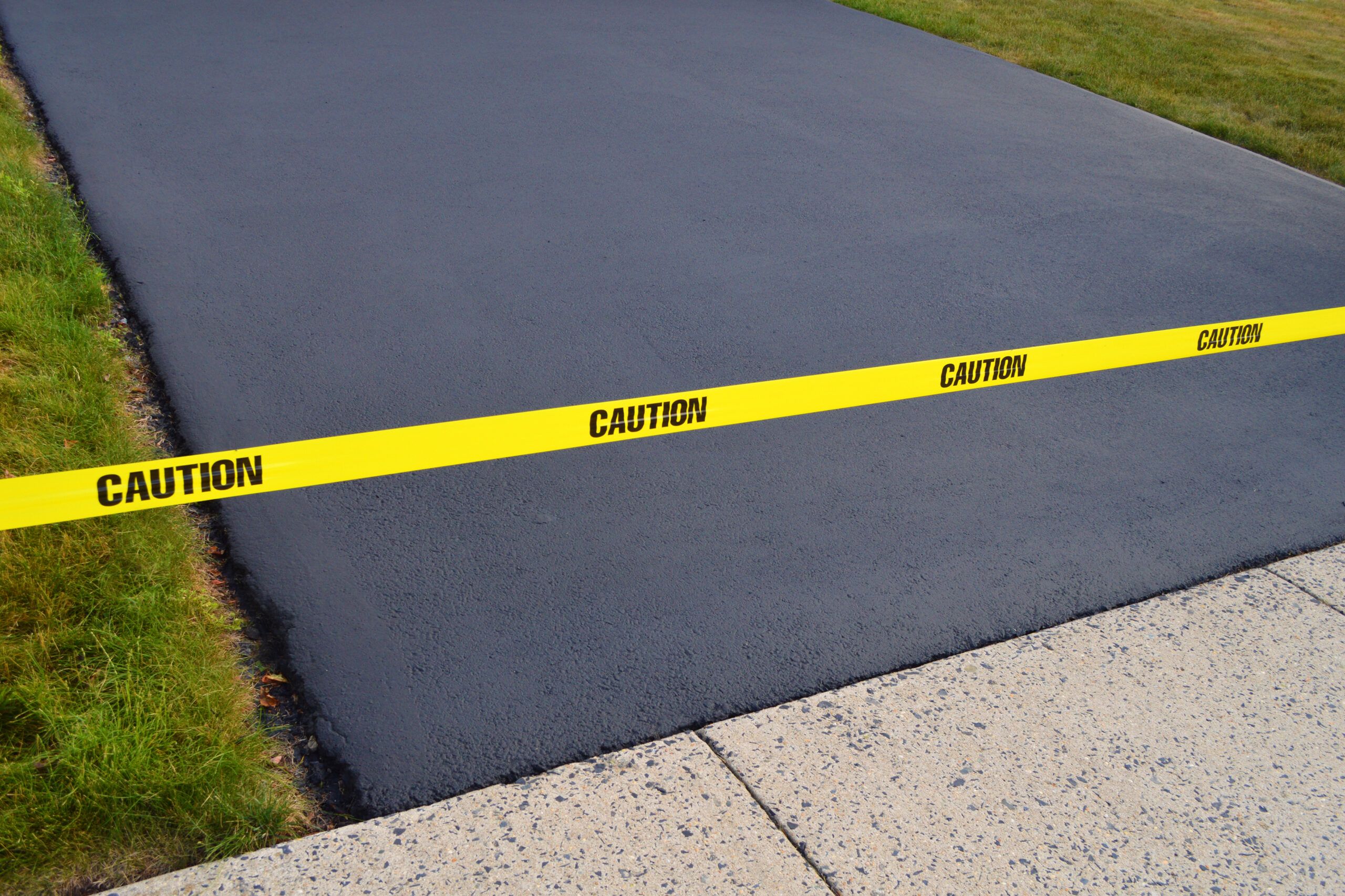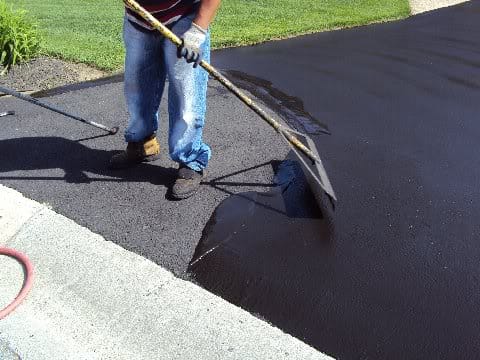Rejuvenate Your Residential Property with Regrading and Asphalt Sealing Methods
Rejuvenate Your Residential Property with Regrading and Asphalt Sealing Methods
Blog Article
Warm Mix Asphalt: A Sustainable Remedy for Sidewalk
Warm Mix Asphalt (HMA) has actually emerged as a leading sustainable selection for pavement solutions, using a myriad of environmental advantages and ingenious innovations. As the need for green building and construction methods grows, discovering the subtleties of HMA's sustainability can offer beneficial understandings right into the future of sidewalk remedies.
Environmental Benefits of Hot Mix Asphalt

In Addition, Hot Mix Asphalt aids to reduce metropolitan warmth island effects. Its dark shade soaks up sunlight, decreasing the quantity of warmth reflected back into the ambience compared to lighter-colored sidewalks. This can reduce ambient temperature levels in urban areas, lowering the need for cooling and inevitably reducing energy consumption.
Additionally, Warm Mix Asphalt adds to improved stormwater management. Its porous nature allows water to recharge and infiltrate the pavement groundwater materials, lowering runoff and the risk of flooding. These ecological benefits make Hot Mix Asphalt a lasting selection for leading highways and roads.
Power Performance in HMA Production
Is energy efficiency an important variable in the production of Warm Mix Asphalt (HMA)? Power plays a considerable function in the production of HMA, affecting both price and environmental sustainability. One vital element of energy performance in HMA production is the usage of warm mix asphalt (WMA) modern technologies.
In addition, advancements in plant innovations have brought about even more energy-efficient HMA manufacturing procedures. Modern plants are made with features like recycled asphalt sidewalk (RAP) handling abilities, efficient burner systems, and boosted insulation, all adding to power savings. By maximizing power use in HMA production, the market can reduce its carbon footprint while maintaining premium pavement products. Energy efficiency is, therefore, a crucial factor to consider in making sure the sustainability of Hot Mix Asphalt production.
Recyclability of Warm Mix Asphalt
The recyclability of Hot Mix Asphalt (HMA) is an essential element of its sustainability and long-term ecological effect. HMA is just one of one of the most recycled products in the United States, with over 100 million lots of reclaimed asphalt pavement (RAP) being recycled each year in new sidewalk building and construction. Recycling HMA uses a number of ecological advantages, such as reducing the need for virgin materials, decreasing energy intake during production, and lowering the quantity of waste sent out to garbage dumps.
The procedure of reusing HMA entails crushing the existing pavement, squashing it into smaller sized items, and mixing it with brand-new aggregate and asphalt binder to create a recycled mix. Overall, the recyclability of HMA plays a substantial duty in advertising sustainable techniques within the sidewalk sector.

Long-Term Performance of HMA
Asphalt sidewalks show toughness and durability over a prolonged period, reflecting the long-term performance of Hot Mix Asphalt (HMA) The longevity of HMA can be credited to its capacity to withstand hefty web traffic lots, extreme climate condition, and the impacts of aging. Research studies have revealed that properly designed and correctly built HMA pavements can last for 20 years or even more with routine upkeep. The trick to optimizing the long-term efficiency of HMA regrading lies in utilizing top notch materials, following ideal practices in building and construction, and applying efficient upkeep approaches. Appropriate drain, routine examinations, and prompt fixings are necessary for protecting the structural integrity of HMA pavements with time. Furthermore, advancements in HMA technology, such as using polymer-modified binders and warm mix asphalt, have actually even more boosted the durability and long life of HMA sidewalks. By prioritizing quality building and maintenance practices, HMA remains to verify itself as a cost-efficient and sustainable option for resilient sidewalk infrastructure.

HMA: Resilience and Sustainability
Demonstrating both durability and sustainability, Warm Mix Asphalt (HMA) has actually become a cornerstone in the building of lasting pavement frameworks - angled parking. HMA's longevity comes from its capability to hold up against hefty lots, rough weather problems, and high web traffic volumes, making it a dependable selection for highways, highways, and airport terminal paths. The make-up of HMA, which typically consists of accumulations, binder, and filler, plays a vital duty in enhancing its durability and resistance to damage
Additionally, HMA's sustainability depends on its recyclability and energy-efficient production procedure. The ability to recycle reclaimed asphalt sidewalk (RAP) in new HMA blends decreases the demand for virgin materials and decreases the environmental influence of pavement construction and maintenance. Additionally, the power performance of producing HMA exists in its reduced mixing temperatures contrasted to other pavement materials, resulting in lowered energy consumption and greenhouse gas discharges.
Verdict
Finally, warm mix asphalt (HMA) uses a sustainable option for sidewalk with its eco-friendly characteristics. HMA's recyclability, power performance in production, and lasting longevity make it a green choice for road construction. By saving natural deposits, lowering waste, and decreasing greenhouse gas discharges, HMA plays a critical function in promoting sustainability in facilities advancement. Its ability to alleviate city warmth island results better highlights its relevance in creating resistant and eco conscious pavement systems.
HMA is one of the most recycled products in the United States, with over 100 million lots of reclaimed asphalt pavement (RAP) being reused every year in new pavement building and construction.The procedure of recycling HMA includes grating the existing sidewalk, squashing it into smaller items, and mixing it with brand-new aggregate and asphalt binder to create a recycled mix.Asphalt pavements show durability and strength over an extended period, reflecting the lasting efficiency of Warm Mix Asphalt (HMA) In addition, advancements in HMA technology, such as the usage of polymer-modified binders and cozy mix asphalt, have additionally improved the resilience and longevity of HMA pavements. The capability to recycle redeemed asphalt sidewalk (RAP) in new HMA mixes reduces the demand for virgin products and minimizes the ecological effect of sidewalk building and upkeep.
Report this page